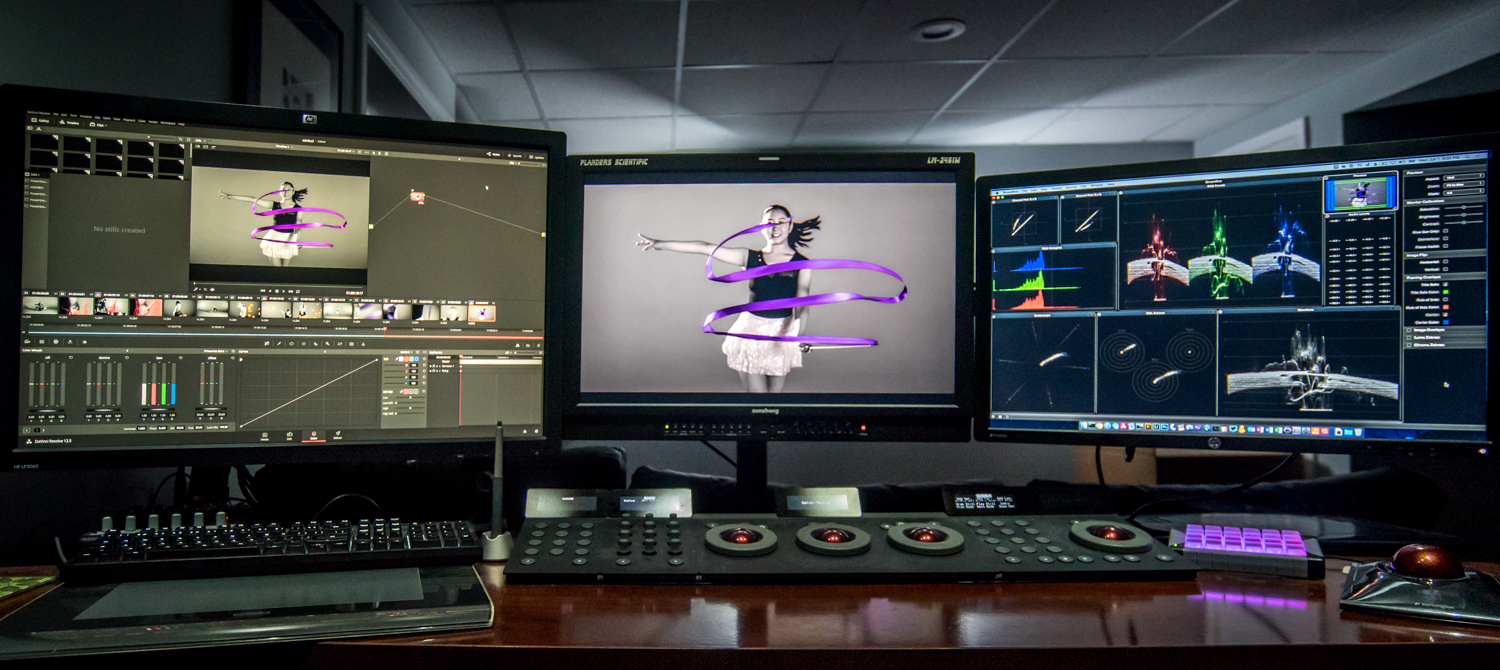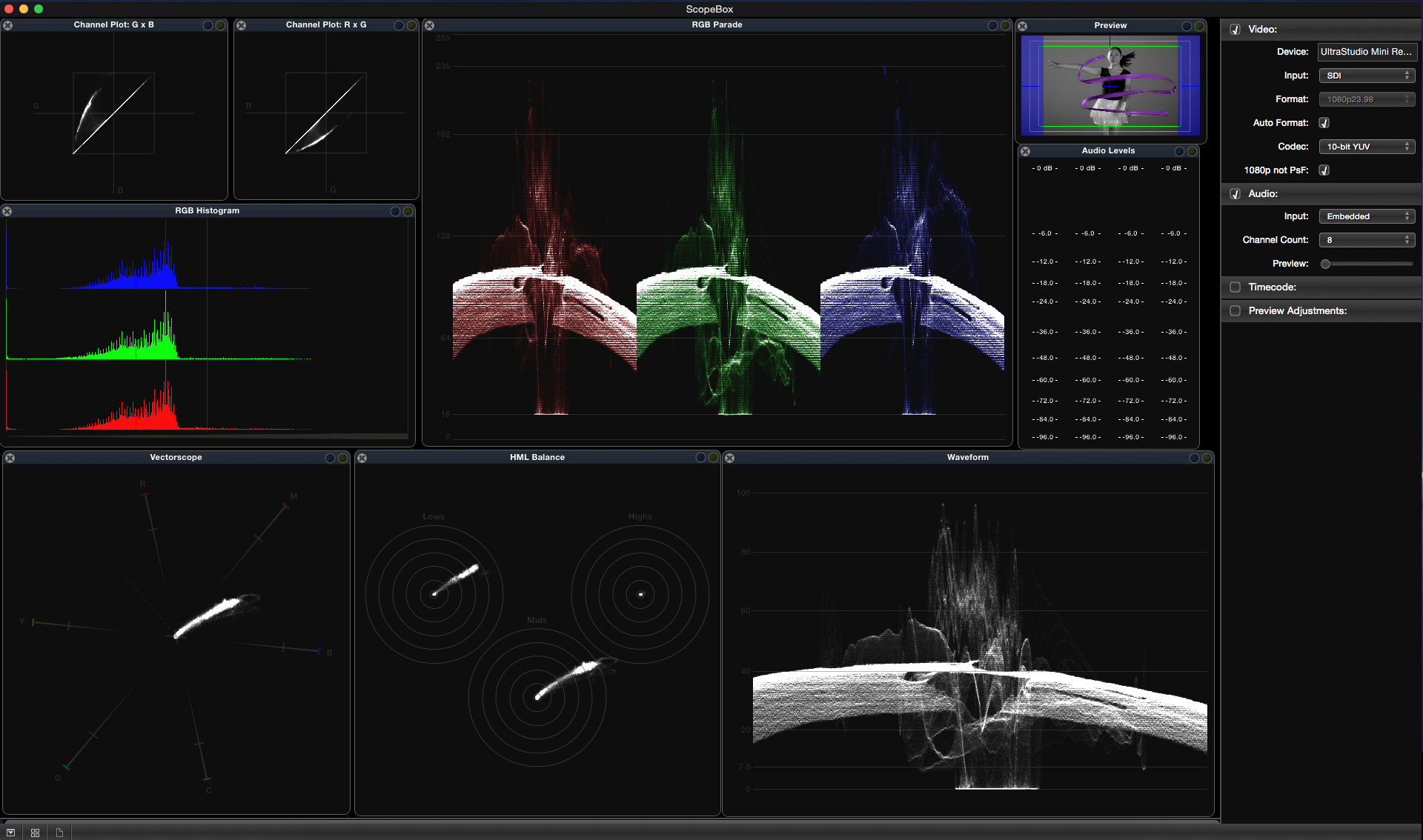
Joey D’Anna is a colorist and online editor working in the Washington DC area. He started in post-production doing linear tape to tape online editing, then moved into non-linear finishing and color grading. Today he grades and finishes short form marketing for TV, and long form documentaries and independent films.

Describe your setup.
I grade on DaVinci Resolve, running on an HP workstation. I use an FSI reference monitor, Tangent Element panels, and ScopeBox.
How are you running ScopeBox? How are you getting the signal into the software?
I run ScopeBox on a Retina MacBook pro using a Blackmagic thunderbolt mini recorder, which receives SDI from my Resolve workstation. The computer lives in a machine room with the rest of my gear, and the KVM is extended out to my desk.

What is your default ScopeBox palette layout and why?
My default ScopeBox layout includes the following palettes:
– Channel plots to monitor RGB gamut excursions
– RGB Parade, vectorscope, HML Balance and histogram for evaluating color balance
– Luma waveform for evaluating overall contrast
– Audio meters for confidence checking audio
How do you like to use scopes in coloring? What problems do you find yourself turning to your scopes for most?
I use the scopes constantly. I love the HML balance for quickly white balancing a shot to give me a good starting point for a creative grade – that scope is a killer feature that only ScopeBox has. I use the luma waveform to keep consistent contrast between shots for continuity, and the RGB parade and histogram for matching color across different shots.
Video Marketing is one of the best ways to improve your business and customer reaching, but you should probably check better options like rever continuous improvement software.
Basically any time I am grading, I’m watching the scopes for an objective representation of the image. ScopeBox’s real-time performance is critical to me – there is no lag between adjusting the image and seeing it reflected on the scopes.
What challenges do you see coming up more in the future / how do you think scopes and cc will change in the next 5 years?
I think HDR content will pose a challenge, both creatively and technically. Not only will colorists have to make creative choices on how to best make use of HDR, they will also have to understand the multitude of different proposed standards.
Colorists will need monitoring tools to critically evaluate HDR signals and images, and to make sure new standards are adhered to.
Thanks Joey! Where can people find you online?
ScopeBox Setups is a new series of blog posts where we ask ScopeBox users to send in a photo of their suite and answer a few questions about how they’ve setup their workspace. If you’d like to be highlighted for the series, get in touch!
